For the backcountry fly fisher, there might not be anything sexier than a lonely beaver pond reflecting a blue-bird mountain sky, and dimpled only by the rises of braindead, off-the-beaten path trout.
God bless beavers and their industrious nature. They make habitat for the fish we love, and opportunities to catch them.
But beavers haven’t always been so fondly considered, even by us anglers. For centuries, they were sought after, not for the work they do to improve stream habitat, but for their luxurious fur. They were trapped throughout the Rockies, nearly to extinction. But, in the last 50 years or so, they’ve made a remarkable comeback, thanks mostly to a cultural shift in how we view the toothy rodents that turn a straight-pipe trickle into a trouty backcountry oasis.
Beavers have value to habitat, and most enlightened folks these days--from farmers and ranchers to conservationists to anglers understand that. It’s not to say the world is perfect and every beaver is loved, but most of us have long since graduated from the misperception that one of God’s creatures could be an evil hurdle to progress.
Yes, a century ago, farmers and landowners were guilty of shoving sticks of dynamite into the woody maze of beaver dams and blowing them up, believing that the dams kept water from running downstream to thirsty crops or thirsty cows. Even those in the conservation arena were guilty of taking a front loader to beaver dams, insisting the dams blocked the migration of native trout to upstream spawning waters (hell, I always thought that to be the case, until a decade or so ago).

But the science is in. Beaver dams do little to hinder water from running downstream. They slow it down, obviously, but it makes its way downhill, as per the simple laws of physics. And those dams actually help with water quantity, too. How so? They serve as a mechanism for groundwater recharge, keeping aquifers full of cold, clean water.
In my day job, it’s my duty to communicate regularly with the press, and a typical week will have me hitting the “send” button on at least a couple of press releases promoting the good work my non-profit employer does to protect and restore trout and salmon habitat all across America. Now and then, I get a reply to one of my press releases from a certain crunchy “journalist” who despises fishing and hunting--and groups like mine that work to improve habitat and opportunity for the benefit of fish and game and those who chase them. Just last week, I got a hateful note from this writer who proceeded to tell me just how much my organization hates beavers, and how we’re out to kill every last one of them.
I quickly called up one of several blog posts we’ve done over the last few years on the positive impacts beavers make to fisheries habitat, pasted the link in an email and suggested she do some research before making such broad assumptions.

And then I thought about it a bit, and did some research of my own. I soon found that we, do, in fact have some examples in the fisheries conservation world where we still take the ax to beaver dams. I think they’re good examples of how, if you view the big picture, a little destruction can help with long-term conservation.
For instance, in southwest Colorado, where efforts are afoot to return a robust population of Colorado River cutthroat trout the upper reaches of the Hermosa Creek drainage, state fisheries managers and volunteers from the local Trout Unlimited chapter have, indeed, removed beaver ponds. But the reason for such a move is hardly sinister--in fact, it was done with the best of intentions.
In order to “treat” a stretch of stream to remove non-native fish from the water and make it habitable for reintroduced native trout, sometimes deconstruction is necessary. Beaver ponds slow water down and make such good habitat for trout--particularly non-native brook trout--that the piscicides used to remove non-native trout often don’t reach every little nook and cranny a pond creates. By removing the dams--yes, the beavers will rebuild--managers can ensure that all stretches of the stream are properly treated. Eventually, when all the non-natives are gone, the natives are reintroduced, and we’ve done a whole lot more good than we have evil.
A year or so later--sometimes it doesn’t even take that long--the beavers have rebuilt and they’re busy once again making habitat better, only this time for the fish that belong there.

For years, biologists have struggled with the questions surrounding beaver dams and fish migration. Do they halt the upstream travel of trout and block off vital spawning and rearing waters. A little over a year ago, a study published in Transactions of the American Fisheries Society proved that beaver dams are not total barriers to fish migration. Bonneville cutthroat trout tagged with telemetry devices were monitored and found to be able to move through beaver dams and swim upstream to spawn, particularly in the high-water season in the spring.
Trout Unlimited’s own science and conservation teams are noting the importance of beavers and their construction talents in helping with many aspects of fisheries conservation, including helping watersheds recover from wildfire and helping aquifers recharge and store waters during drought. Beavers may be some of our best natural tools for combating the ill effects of a warming world when it comes to how climate change impacts cold-water-loving trout.
It’s good to see that science, agriculture and recreation are coming around to the beneficial impacts beavers can have on watersheds, both for the good of the environment and the good of the fishing.
But a lot of us backcountry creek freaks have known along that beavers help make fishing better, simply because they create fish habitat. And habitat translates directly into opportunity.
The next time you’re startled when a beaver slaps its tail on the water and dives into the depths of the pond, say a silent thank you and wait a minute or two. Then, make a cast across that smooth, dark water and hold on tight.




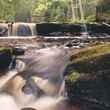

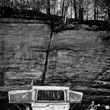




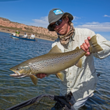
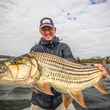



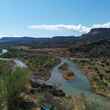
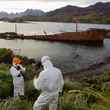



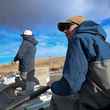
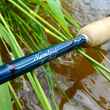






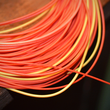
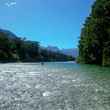
Comments
Kirk @ River Mud replied on Permalink
Well-stated. The idea that beaver (and beaver alone...not the shopping mall upstream) held the key to water temperatures in trout waters was always a ridiculous one. As beaver re-enter our eastern habitats, we're designing stream and wetland structures in a way that encourage and allow beavers, instead of structures that require beaver "damage" to be abated by constant management actions.
Pages